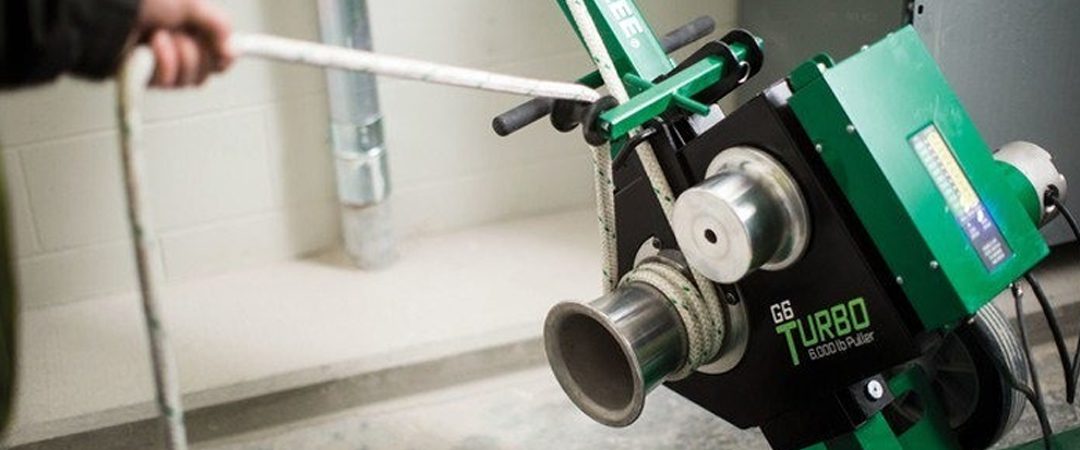
Pulling electrical cable through conduit is a labor-intensive task. Prior to the availability of electricity-powered cable pullers, this task was always performed by hand.
Cable pullers can save you money on labor costs and improve safety. Since you’re not pulling by hand, your body will experience less strain and you can devote your attention to watching for problems.
This article will take a closer look at the main kinds of equipment used by electrical workers for wire handling.
How does a cable puller work?
The cable puller makes use of a power source that fuels a turning capstan. The capstan pulls the wire and a special kind of pulling rope through the conduit, replacing the need to pull it manually.
Cable pullers come in different sizes and are often portable. They can handle various pulling forces, with some models able to take on around 10,000 pounds. Some cable pullers also have force gauges that help you notice problems faster.
Using a manual fish tape as a cable puller
Feeding tape through a conduit is a necessary first step before using a cable puller. Fish tape is used primarily on smaller projects and is often the preferred method for pulling wire through conduits.
Fish tapes are steel, stainless steel or fiberglass wire that’s stored in a wheel-shaped plastic structure, and the way the fish tape is stored makes it easier to feed into the conduit.
For steel fish tape, one worker holds the fish tape holder (the doughnut-shaped wheel) and the tape is hand-fed into the conduit. Once it emerges on the other side, the electrical wires that need to be fed through the conduit are attached to the fish tape, which allows the wires themselves to be pulled through the conduit with ease. Both the tape and wires are fed into the conduit and manually pulled back to where the fish tape was originally fed into the conduit, completing the process.
For fiberglass fish tape, you must hook onto fish line and pull that back to hook to the cable. Fiberglass fish tapes are not designed to directly pull the wires due to their fragile nature.
Pulling rope for cable pullers
Cable pullers use a special pulling rope that must be incredibly strong and able to handle friction. It’s important to know the tension capabilities of pulling rope, as well as how friction affects rope when it’s used on a capstan and how much it will stretch.
Choosing the right rope size is also crucial. Even if you determine that your pull won’t exceed 2,000 pounds, for example, you don’t want to use a ½ inch diameter rope with a 10,000-pound cable puller. If something catches and the rope breaks because it wasn’t rated for the pressure of the machine, it could cause injury. Read your cable puller’s specs to identify the correct rope size.
A rope that stretches is not acceptable because like a stretched rubber band, it will be released if the rope snaps. This could cause the cable to recoil and injure someone.
Double-braided composite rope is the best choice for pulling because it’s like two ropes in one. It’s also a high-strength, low-stretch rope.
Cable pulling equipment
Cable pullers are just one way to save time and money on wire handling. Find a local Border States branch near you to discover more ways you can make your wire handling processes more efficient.
This article was originally published on July 7, 2017. It was updated and republished on September 7, 2021.
Read more